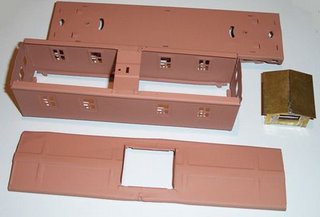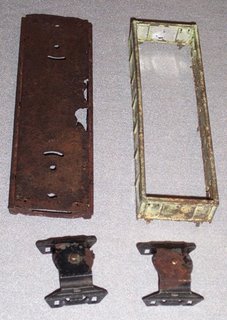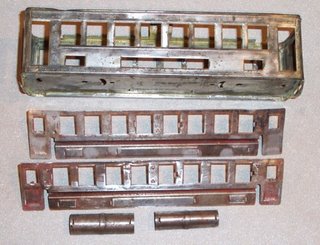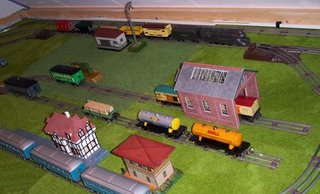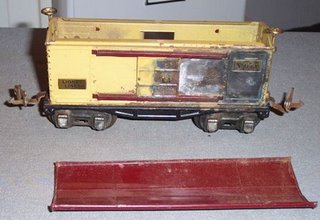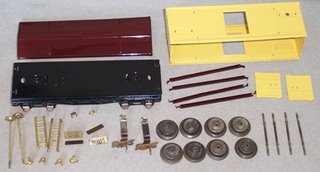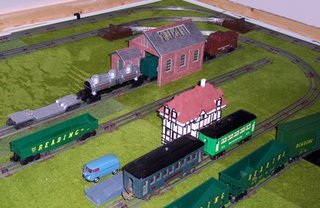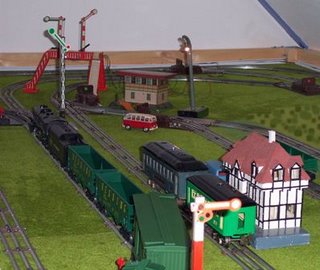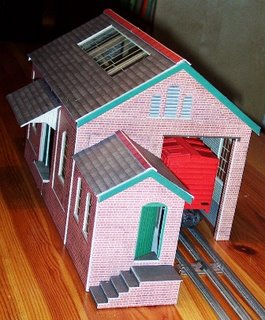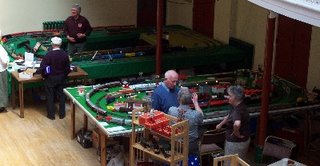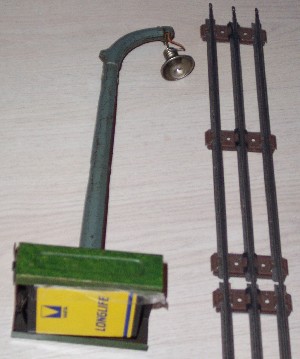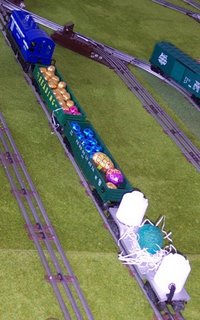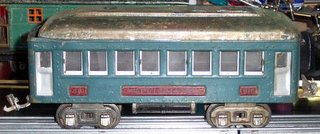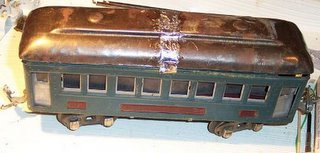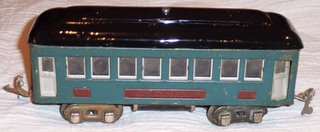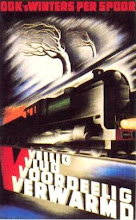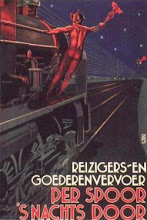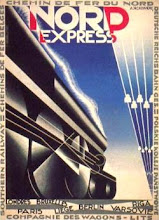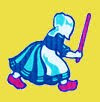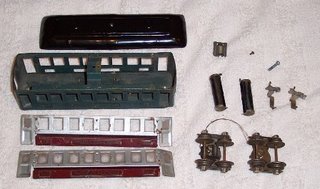

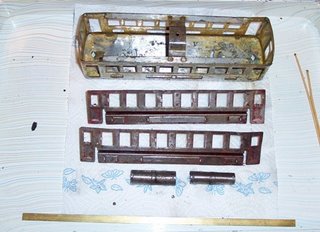
There are many ways to strip paint from pre-war metal tin toys, including: sand blasting, sanding, immersion in white spirit or ammonia and cooking in detergents. The latter method is by far the easiest. You basically take a big pan, fill it up with water, add some normal detergent without bleaching agents and let it come to boiling temperature. Then you immerse the Lionel parts in the pot and let is stand for at least 30 minutes on low fire and occasionally stir the mixture. Afterwards you take it out, rinse the item with hot water and lightly sand the places where some paint had remained. In the corners usually some paint is left, and I use a brass scraper (brass is softer than tin-plated iron) to gently remove the left-overs.
The photo's show the 610 passenger car in dissembled state, in the cooking pan and out after two rounds of cooking. The trouble with this car was that it had been redecorated and a more modern paint which was less easy to remove. It formed a thick sticky yellowish gel and I sanded it of with hot water and a kitchen sanding sponge.
Good luck and mind that the water is really dark coloured after cooking the first time, do not stain your clothes or kitchen with it.
Regarding the alternative methods:
1) Sand blasting works great, but you need to set up your compressor and blaster / cabinet everytime. If you got a permanent set-up, that is great, but otherwise it is a lot of extra time
2) Ammonia immersion works, but stinks and the exposed metal parts get slowly discoloured
3) Sanding is great and there are nice mini-sanders for the hobby available, but it is a lot of work!


